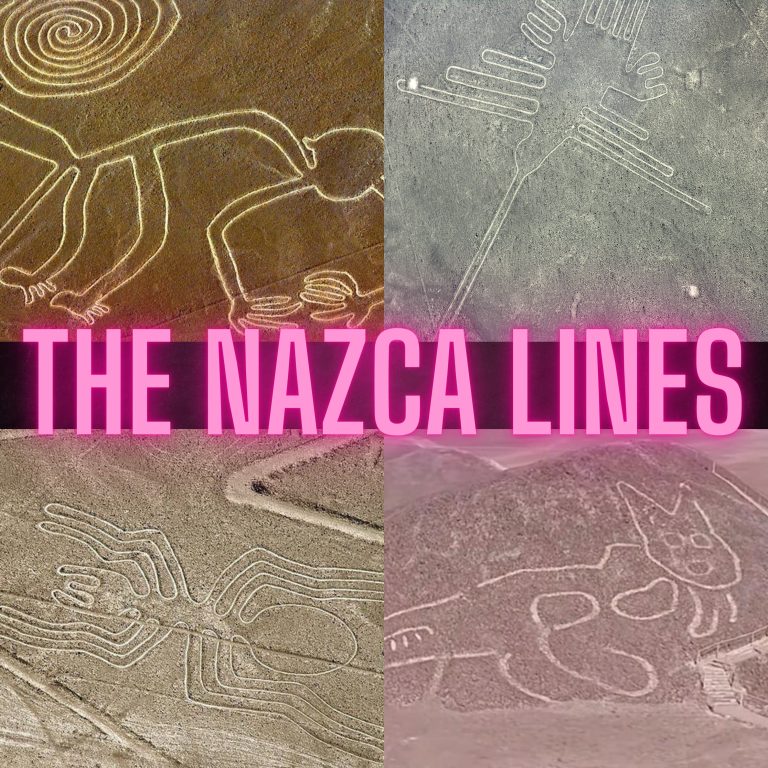
This show will get to the bottom of all those questions you need answers to. Each week we will cover a topic that has been left out in the public square unattended and covered with questions from the “official story” You will be able to determine on this show if the topic has been deemed a “Conspiracy” or a “Conspiracy Theory”.
The Nazca Lines, a series of ancient geoglyphs located in the Nazca Desert of southern Peru, have intrigued historians, archaeologists, and tourists alike for decades. These immense patterns etched into the earth, representing a variety of animals, plants, and geometric shapes, are a testament to the ingenuity and creativity of the ancient Nazca civilization. This episode will delve into three aspects of the Nazca Lines: their discovery, their construction, and the theories behind their purpose.
The Nazca Lines remain one of the world's most enchanting mysteries. Despite the numerous theories and extensive research, we are still far from fully understanding what led the Nazca civilization to create these remarkable geoglyphs. As we continue to study and preserve these lines, we pay homage to an ancient civilization's ingenuity and its enduring influence on our quest to understand the past.
Website – http://www.bottomofthat.com
Instagram – https://www.instagram.com/bottomofthat
Facebook – https://www.facebook.com/bottomofthat
X – https://twitter.com/bottomofthat
TikTok – https://www.tiktok.com/@bottomofthat
YouTube – https://www.youtube.com/channel/UCUI8xiBFWNntcMobz-_pbQQ
Rumble – https://rumble.com/c/c-1875987
Bitchute – https://www.bitchute.com/channel/TAIftfmNde4J
Email – truth@bottomofthat.com
#nazcalines

Unraveling the Mysteries of the Nazca Lines
Introduction
The Nazca Lines, a series of ancient geoglyphs located in the Nazca Desert of southern Peru, have intrigued historians, archaeologists, and tourists alike for decades. These immense patterns etched into the earth, representing a variety of animals, plants, and geometric shapes, are a testament to the ingenuity and creativity of the ancient Nazca civilization. This blog post will delve into three aspects of the Nazca Lines: their discovery, their construction, and the theories behind their purpose.
Discovery of the Nazca Lines
The Nazca Lines were first noticed from the ground by Peruvian archeologist Toribio Mejia Xesspe while hiking through the foothills in 1927. However, it was not until commercial airlines started flying over the region in the 1930s that the full extent and intricacy of the lines were realized. The lines cover an area of nearly 450 square kilometers, with the largest figures measuring up to 370 meters long. Over 800 straight lines, 300 geometric figures, and 70 animal and plant designs have been identified to date.
Construction of the Nazca Lines
The Nazca Lines were constructed by removing the reddish-brown iron oxide-coated pebbles that cover the surface of the Nazca desert. When the gravel was removed, a layer of whitish-gray subsoil was exposed. By removing the top layer of rock, the ancient Nazcas were able to create contrast in color, and hence, generate these remarkable images. The lines were likely made using simple tools and surveying equipment, including sticks, cord, and sighting poles.
Theories Behind the Purpose of the Nazca Lines
The purpose of the Nazca Lines continues to be a hot topic of debate among researchers. Some believe that they had astronomical purposes, as some lines align with the sun, moon, and certain stars during solstices. Another theory suggests that the lines were part of a ritualistic water worship, given that the Nazca civilization lived in an arid region with scarce water resources. Other theories propose that the lines served as an ancient form of communication or were related to the Nazcas’ religious beliefs.
Conclusion
The Nazca Lines remain one of the world’s most enchanting mysteries. Despite the numerous theories and extensive research, we are still far from fully understanding what led the Nazca civilization to create these remarkable geoglyphs. As we continue to study and preserve these lines, we pay homage to an ancient civilization’s ingenuity and their enduring influence on our quest to understand the past.


